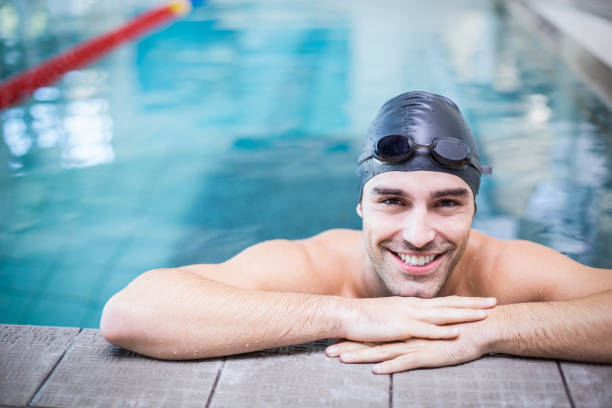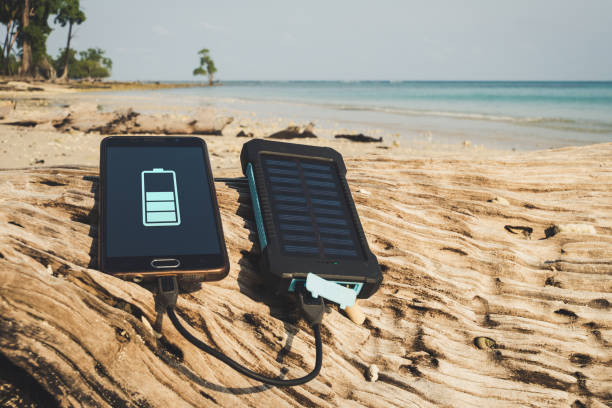The Ultimate Guide to Choosing the Best Swim Caps

Whether you’re a competitive swimmer, a casual lap swimmer, or someone who simply enjoys the occasional dip in the pool, choosing the right swim cap can make a big difference in your experience. But with so many different types, materials, and brands available, finding the best swim cap for your needs can feel overwhelming.
This ultimate guide will walk you through everything you need to know about swim caps — from why they matter to the best types for specific needs and how to choose one that fits perfectly. We’ll also dive into expert reviews, care tips, and common problems swimmers encounter with swim caps. By the end, you’ll be equipped to pick the perfect cap for your swimming style, preferences, and budget.
Why Swim Caps Matter
You might be wondering, “Do I really need a swim cap?” After all, swimming is a water activity — shouldn’t water just slide off our hair naturally? While it’s true that swim caps won’t keep your hair completely dry, they offer numerous benefits that make them indispensable for any swimmer, regardless of skill level.
Here’s why swim caps matter:
- Hair Protection: Swim caps help protect your hair from the harsh effects of chlorine and saltwater. They create a barrier that prevents these chemicals from drying out your hair, leading to frizz, split ends, and discoloration.
- Hydrodynamics: For competitive swimmers, the sleek, tight-fitting nature of swim caps reduces drag in the water, helping you glide faster and more efficiently.
- Cleanliness and Hygiene: Swim caps help keep your hair out of your face and prevent it from shedding into the pool, ensuring cleaner and more pleasant swimming conditions for everyone.
- Warmth in Cold Water: For open-water swimmers and triathletes, certain types of swim caps (such as neoprene) can provide extra insulation, helping maintain body heat in cold water.
With so many types of swim caps available, you can choose the best one based on your individual needs.
Types of Swim Caps
1. Silicone Swim Caps
Pros:
- Durability: Silicone swim caps are known for their long lifespan. They resist tearing and are more resistant to the damaging effects of chlorine. Check out the Speedo Silicone Swim Cap for a top-quality option.
- Comfort: Unlike latex caps, silicone is softer and more comfortable, making it easier to wear for long periods.
- Elasticity: They offer a snug fit, ensuring the cap stays in place while swimming.
- Water Resistance: Silicone caps do a great job of keeping your hair dry by providing a better seal than latex.
Best For: Competitive swimmers, regular swimmers who swim frequently.
Popular Brands: Speedo, TYR, Aqua Sphere
Silicone swim caps are a top choice for serious swimmers due to their performance-oriented features. They’re durable, provide a better seal, and can withstand regular use.
2. Latex Swim Caps
Pros:
- Lightweight: Latex caps are typically thinner and lighter than silicone, which can feel less restrictive. Explore options like the Speedo Latex Swim Cap.
- Tight Fit: They offer a snug, almost “second skin” fit.
- Cost-Effective: Latex caps are more budget-friendly compared to silicone.
Cons:
- Potential Allergies: Some people may experience allergic reactions due to latex sensitivity.
- Durability: Latex caps tend to tear more easily and degrade faster than silicone.
Best For: Occasional swimmers or those looking for budget-friendly options.
Latex swim caps offer a great balance of performance and affordability but aren’t as durable as silicone. If you’re just starting out or swim occasionally, they’re a solid choice.
3. Lycra/Spandex Swim Caps
Pros:
- Soft and Comfortable: These caps are much more comfortable than silicone or latex options, making them easy to wear for long periods.
- Easy to Put On and Take Off: Lycra caps slip on and off easily, which is ideal if you don’t want to struggle with pulling a tight silicone or latex cap over your hair.
- Breathable: Lycra and spandex allow your scalp to breathe, making them a great option for recreational swimmers.
Cons:
- Not Water-Resistant: These caps won’t keep your hair as dry since they aren’t as waterproof as silicone or latex.
- Less Durable: Lycra caps wear out quicker than silicone and latex options.
Best For: Recreational swimmers or those who need something easy on the hair.
If you prioritize comfort over performance and aren’t too concerned about keeping your hair dry, the Lyricra like the TYR Lycra Swim Cap might be perfect for you..
4. Neoprene Swim Caps
Pros:
- Cold Water Insulation: Neoprene swim caps are excellent at providing insulation, making them ideal for open-water and cold-water swimming. See the Blueseventy Thermal Neoprene Cap.
- Heat Retention: They keep your head warm during colder weather, which can help extend your swimming time in chilly conditions.
Best For: Open-water swimmers, triathletes, and cold-water swimmers.
Neoprene caps are more specialized, catering to swimmers who need extra warmth in frigid conditions. If you’re swimming outdoors in cooler temperatures or competing in a triathlon, a neoprene cap is a must-have.
5. Textile Swim Caps
Pros:
- Durable and Comfortable: These caps are typically made of fabric and tend to last longer than Lycra. They’re also softer and more comfortable on the hair.
- Perfect for Long Hair: They’re excellent for swimmers with long or thick hair, as they don’t pull or tug.
Best For: Swimmers with long hair who need a cap that won’t pull their hair.
Textile caps are an excellent choice if you’re looking for something that’s gentle on long hair but still provides some protection against chlorine and saltwater.
Key Features to Look for in the Best Swim Cap
Material and Comfort
Comfort is crucial when choosing a swim cap. The material directly impacts the fit and comfort of the cap, so think about whether you prefer something soft like Lycra or more durable like silicone. Your comfort level will determine how much you enjoy wearing the cap, especially during longer swimming sessions.
Size and Fit
Choosing the right size and fit is essential for a swim cap to perform well. A cap that’s too tight can cause discomfort and headaches, while one that’s too loose will allow water to seep in. Look for caps that are designed for your head shape and size. Many brands offer “one-size-fits-all” options, but if you have a larger or smaller head, look for a cap that offers multiple size options.
Durability
How often do you swim? If you’re a regular swimmer, you’ll want a cap that lasts a long time, which is why silicone and neoprene are excellent choices. If you’re a casual swimmer or only swim occasionally, latex or Lycra caps may suit you better, as they are more affordable but might not last as long.
Water Resistance
If your main goal is to keep your hair dry, you’ll want a swim cap that’s highly water-resistant. Silicone caps excel in this area, providing a tight seal and keeping water out.
Breathability (For Longer Wear)
If you plan to spend extended periods of time in the water, consider a breathable cap made of Lycra or spandex. These materials allow for more airflow, keeping your scalp from becoming too sweaty or uncomfortable.
Design & Style
Swim caps are also a great opportunity for personal expression! Many swimmers choose colors and patterns that suit their style, whether it’s bold and bright or sleek and minimal. Some brands even offer custom designs, allowing you to showcase your personality while swimming.
Top 5 Swim Caps for Every Type of Swimmer
1. Best Overall Swim Cap: Speedo Silicone Swim Cap

Pros:
- Superior water resistance
- Excellent durability
- Comfortable and snug fit
Cons:
- Slightly more expensive than latex caps
Best For: Competitive swimmers, frequent swimmers.
The Speedo Silicone Swim Cap is a top choice for those who swim regularly or compete. It combines comfort, water resistance, and durability, making it a reliable option for any serious swimmer.
2. Best Budget Swim Cap: Speedo Latex Swim Cap

Pros:
- Affordable
- Lightweight and snug fit
Cons:
- Not as durable as silicone
- May cause allergic reactions for some swimmers
Best For: Occasional swimmers, swimmers on a budget.
The Speedo Latex Swim Cap offers a fantastic balance of price and performance, making it ideal for swimmers who need something cost-effective.
3. Best Swim Cap for Long Hair: Speedo Stretch Cap

Pros:
- Roomy enough for long or thick hair
- Comfortable fit without pulling or tugging
Cons:
- Not as water-resistant as silicone
Best For: Swimmers with long hair.
If you have long or thick hair and want a cap that won’t cause tangling or discomfort, the Speedo Stretch Cap is a great option.
4. Best Swim Cap for Open Water Swimming: Blueseventy Thermal Neoprene Cap

Pros:
- Provides warmth in cold water
- Excellent insulation
Cons:
- Not ideal for indoor swimming
Best For: Cold-water swimmers, triathletes.
The Blueseventy Thermal Neoprene Cap is a must-have for open-water swimmers who need extra warmth. It’s designed for colder conditions and offers excellent thermal protection.
5. Best Swim Cap for Comfort: TYR Lycra Swim Cap

Pros:
- Soft and comfortable
- Easy to put on and take off
Cons:
- Not very water-resistant
Best For: Swimmers looking for maximum comfort.
The TYR Lycra Swim Cap is perfect for swimmers who prioritize comfort above all else. It’s lightweight, soft, and breathable, making it ideal for those who swim casually.
How to Choose the Right Swim Cap for Your Needs
When selecting the perfect swim cap, you should consider several factors, including:
- Swimming frequency: If you swim often, opt for a durable material like silicone or neoprene. If you swim less frequently, a budget-friendly latex or Lycra cap will suffice.
- Hair type: Long or thick hair requires a cap that offers more room, like the Speedo Stretch Cap. For shorter hair, most caps will work just fine.
- Sensitivity/allergies: If you have a latex allergy, stick with silicone, spandex, or neoprene caps.
- Water temperature: For cold-water swimming, go for neoprene; for indoor swimming, silicone or Lycra caps work best.
How to Fit a Swim Cap
- Stretch the cap: Gently stretch the cap and place it over your head, ensuring it covers your hair completely.
- Adjust for comfort: Make sure it’s snug but not too tight. It should feel secure but not cause discomfort.
- Avoid wrinkles: Smooth out any wrinkles to ensure a snug, streamlined fit.
Tips for Taking Care of Your Swim Cap
- Rinse it after each use to remove chlorine or saltwater.
- Dry it properly by gently towel-drying and hanging it in a cool, dry place.
- Avoid folding your cap when storing it, as this can cause it to stretch out or tear.
Common Swim Cap Problems and How to Solve Them
Problem: Swim cap is too tight
Solution: Choose a larger size or opt for a Lycra cap for better stretch.
Problem: Swim cap tears quickly
Solution: Invest in a silicone or neoprene cap for better durability.
Conclusion
Choosing the best swim cap is about balancing your swimming style, comfort, and specific needs. From silicone’s durability to Lycra’s comfort, there’s a cap for everyone. Consider your hair type, how often you swim, and any special requirements like water temperature or comfort when making your decision.
Now that you’ve got all the essential information, take a moment to assess your needs and pick a swim cap that will enhance your swimming experience. Whether you’re looking for speed, comfort, or protection, there’s a cap that’s just right for you!
Happy swimming!
* Voyedy may receive compensation for purchases made at participating retailers linked on this site. This compensation does not affect the products displayed or their order. Learn more here.





